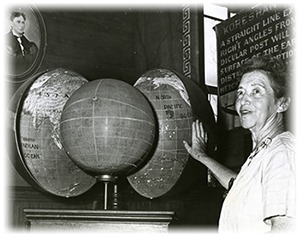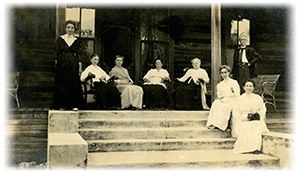The Koreshan Unity
With its warm climate and seemingly endless coastline, Florida was a natural magnet for settlers from colder northern climates and all manner of pioneers. In the 1890s, Florida became home to one of the state’s most interesting and influential pioneering communities: the Koreshan Unity.
The Unity was a late-19th/early-20th century religious utopian community originally founded in upstate New York by Dr. Cyrus Teed and later headquartered in Chicago before finding its permanent home on a 320 acre plot of land in Estero south of Fort Myers, where Teed intended to found the “New Jerusalem.”

Among the most interesting beliefs of Koreshanity was the cellular cosmogony, or the hollow earth. According to the cellular cosmogony, the earth was not a convex sphere but instead a hollow, concave cell containing the entire universe with the sun at its center and Earth's populace living on the inside surface of the hollow cell. Koreshan beliefs also included a biune God, one that was both male and female; reincarnation; communal social organization; and equality of the sexes.
The Koreshan melding of religion, science, and utopian communalism attracted the attention and interest, if not the devotion, of such prominent public figures as Thomas Edison, Henry Ford, and famed horticulturist Henry Nehrling.

The Koreshans began moving to their New Jerusalem in 1894. By 1904 the growing Koreshan community had incorporated the Town of Estero and embarked on years of construction of a number of buildings including residences; a publishing house; a machine shop; a bakery; a general store; a Planetary Court housing the seven women who managed the Unity; an Art Hall used for plays, concerts, lectures, religious activities, and other events; and a power plant which provided electricity not only to the Koreshan community but also to surrounding areas well before the rest of southwest Florida had access to electrical power.
Following the death of their charismatic founder on December 22, 1908, membership steadily declined, but the Koreshan Unity continued for many years under the leadership of loyal followers and members.
In 1960, Hedwig Michel, known as “The Last Koreshan,” became president of the Koreshan Unity and began working with state officials to ensure preservation of the site of their original settlement. The site became a Florida State Historic Site in 1961, a testament to the Unity’s historic role in the development of Southwest Florida and their place in the overall history and development of millennial communities and communal utopias in the United States.
Hedwig Michel died in 1982, the last person officially admitted to Koreshan membership and the last to live at the site they had settled almost a century earlier.
This exhibit was made possible in part by a grant from the National Historical Publications and Records Commission.

 Listen: The Latin Program
Listen: The Latin Program